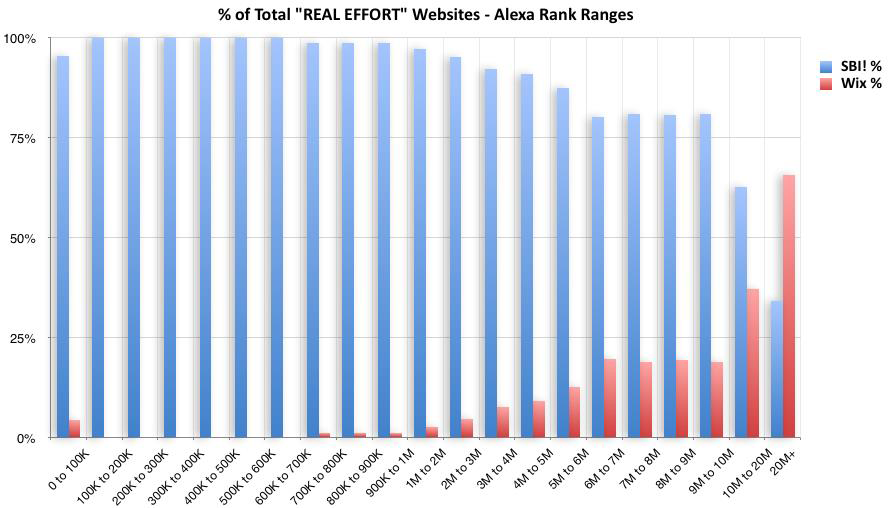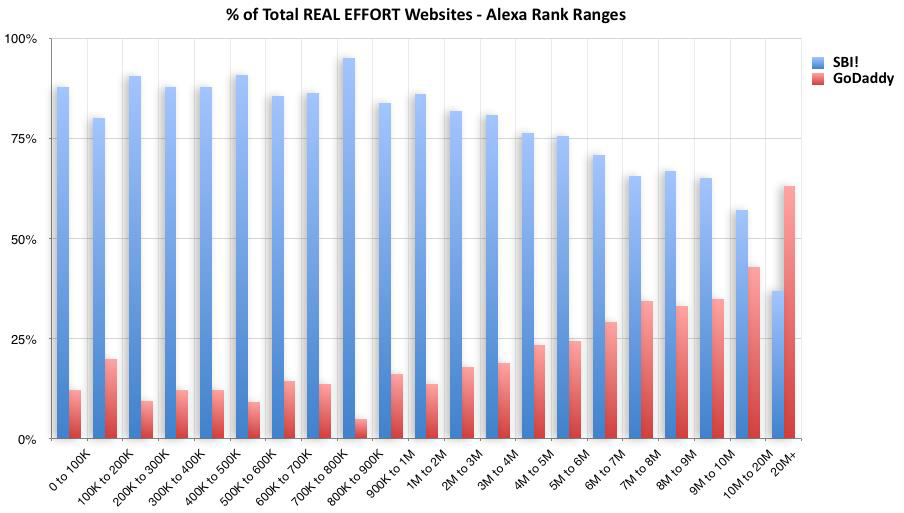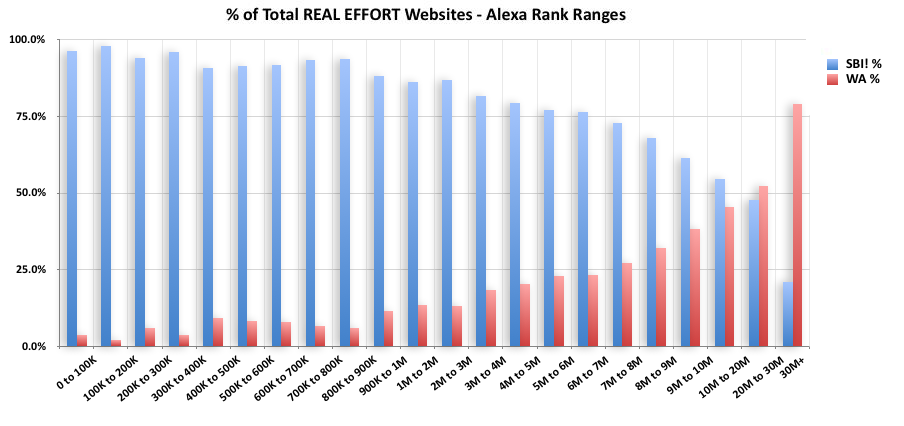
In 1930, a young engineer and consumer activist by the name of Arthur Kallet published an interesting book titled 100,000,000 Guinea Pigs: Dangers in Everyday Foods, Drugs, and Cosmetics.
In the book, Kallet famously stated (emphasis added):
If these foods and medicines were—to most of the people who use them—merely worthless; if there were no other charge to be made than that the manufacturers’, sales managers’, and advertising agents’ claims for them were false, this book would not have been written. But many of them, including some of the most widely advertised and sold, are not only worthless, but are actually dangerous.
That was the start of a nearly 40 year career for Kallet, and one of the key catalysts for the consumer movement — an ongoing attempt by activists to educate the public and influence the manufacturing of goods.
In 1936, Kallet left an organization called Consumer Research to create a new, more aggressive group called Consumers Union. CU is a “non-profit organization focusing on product testing, investigative journalism, and consumer advocacy in an attempt to help consumers to make informed decisions in the marketplace and to encourage market actors to place the needs of consumers first.”1
They’re far more well known for their magazine and website, Consumer Reports. That impactful publication has been in distribution since the very first days of Consumers Union. Through the ensuing decades, it has established a reputation for unbiased testing and reporting.
They “rigorously test products and services,” according to their home page, in order to help consumers make the “smart choice.” It employs rigorous and “can’t be bought” testing to cut through the marketing claims of a wide variety of products to identify which is the best of its kind. That raises the question…
Why Not Apply CU’s Principles to “Make Money Online” Products?
If ever there was an industry in need of rigorous reviewing, it is ours.
That’s why we called out Kallet’s famous quote above and bolded the final sentence…
The world of web hosts (e.g., GoDaddy), site builders (e.g., Wix), internet marketing and business-building, bombards would-be solopreneurs with everything from Super Bowl ads to fake online reviews. But – do they deliver results?
Products that claim to help solopreneurs build successful online businesses should be reviewed with “CU-level objectivity.” Why?
Individuals risk much more than “just” the cost of the product. They invest serious amounts of time to achieve goals and dreams that are important to them and their families.
The industry does not self-regulate by developing a standard measure of effectiveness, publishing real results according to protocols agreed upon by all. The reason is simple – most solopreneurs fail.
We have long been the the only company that publishes verifiable proof of success. “Verifiable” means that the domain name is provided. This enables you to check that the site is a client and that s/he receives high levels of traffic.
Even though this proof is overwhelming in the number, levels and types of success, it’s not the same as a rigorous study that allows the solopreneur to directly compare one product against another.
As mentioned in this article on choosing the best blogging platform, we did not realize the need for this ground-breaking series until we discovered we were the victim of countless affiliate-written fake reviews.
Debating and combating the falsehoods of every fake review would have been pointless. The replies by fraudulent authors would have been more of the same untruths.
The writing of fake reviews is a widespread issue that impacts many different businesses, and consumers!
And it happens from both perspectives:
A Fake Review is a positive, neutral or negative review that is not an actual consumer’s honest and impartial opinion, or that does not reflect a consumer’s genuine experience of a product, service or business.European Parliamentary Research Service
Fake reviews give readers incorrect information and inaccurate opinions that result in missed opportunities, or worse. One business may profit from fake reviews in its favor, while another suffers. Either way, the consumer loses.
That’s why studies like this one are not only essential, they should become the agreed-upon norm that prospective solopreneurs can trust.
The solution? Bypass the fake review game of fake claims, undocumented stories (e.g., “John Smith, NY, NY”) and hearsay. Instead, conduct an objective, transparent, head-to-head study that compares the only thing that matters, results.
Our study was as rigorous as scientific studies, including a detailed methodology. That was especially important because it enables anyone to do the study. No one, not even the company being promoted by fake reviews, has published results different from ours.
 If true, near-free energy, the only byproduct of which is water, would have changed the world.
If true, near-free energy, the only byproduct of which is water, would have changed the world.
The release of this information was accompanied by the full methodology.
Think of it as pre-Internet crowd-sourcing to verify important findings.
Labs around the world tried. Sadly, no one could reproduce the results. Cold fusion was soon discredited.
Authors of studies may be honest, biased (seeing what they want to see) or outright liars. Heck, they may even be marketers! So…
Enabling colleagues, competitors or anyone with an interest to perform the same experiment soon gets to the truth.
So our head-to-head study included instructions (a.k.a. “methodology”) to enable the company in question, any affiliate, anyone with doubts, and even you, to “test the test” and confirm or refute the results.
The results shocked us so much that we repeated them. The repeat was spot-on, and neither the competing company nor any of its many fake reviewers have published any rebuttals of the following results…
We discovered that SBI! is 33 times (33X) more effective at generating high-traffic websites than the “make money online” product being pushed onto solopreneurs. It’s important, so we repeat…
This was true “Consumer Reports” type of material, with one big difference. The results were so extreme that they sparked us to wonder how solopreneurs do with other products. Furthermore…
If we did a full series of studies that covered all the major types of products that solopreneurs use, we could, for the first time ever, document “the state of solopreneurship“:
- What percent succeed and at what levels?
- What types of products deliver the highest success rates?
No marketing hype, this is 100% objective data. This series will, we hope, open an important discussion. Does the solopreneur’s choice of business-building product affect outcome? By how much?
SPOILER: We’ll see that most solopreneurs fail and that choice of product makes a big difference. If they learn to ignore marketing and sales efforts, and instead insist upon data-supported proof of results, they will:
- choose the best product for them
- force companies to actually help people succeed
After all, if you are ready to make the serious commitment of starting an online business, you deserve to start with the best chance of success. Data-supported proof of success gives you that.
Anyone whose main goal is to create a profitable business is, frankly, foolish to believe marketing over actual study-generated data.
 P.T. Barnum is known for the famous phrase:
P.T. Barnum is known for the famous phrase:
“There’s a sucker born every minute.”
Unfortunately, the Internet makes it easy for today’s Barnums to find you, and for you to find (without realizing it) some of the worst con artists who fool people into believing how much they care.
The search for information on how to “make money online” (or pain relief, weight control, etc.) impacts our lives at primal emotional “NEED” levels. A skilled marketer can make a sucker out of almost anyone because most of us really WANT to believe.
Scam artists don’t think of you as a real person with a face, a family, goals and dreams. You’re just a challenge. They dream up ways to separate you from your money.
Even the worst product can sound wonderful in the hands of sharp copywriters and advertisers. But the life-changing potential of starting your own online business can disappear so quickly. All you have to do is believe the marketing.
That realization, sparked by the 33X superiority of SBI! vs the competitor’s high fail rate, led to this wider mission of determining how solopreneurs do, and how the industry can improve those results.
We designed a series of tests, similar in nature to the original one that studied fake reviews. Each study has been customized to adjust to the nature of the business of each product.
We sought to answer two questions:
- How are solopreneurs doing with each product? This helps the would-be solopreneur to make the best decision possible, using data, while ignoring “marketing.”
- What is the level of overall solopreneur success? By studying a wide variety of products, we will approach an estimate of overall solopreneur success. Also, we’ll discover which products overpromise and underdeliver.
If you insist on data instead of marketing, you will provide the push necessary for “the solopreneur industry” to care more about client success, which is the big picture goal – make the industry more accountable to you. So let’s start…
Let’s focus on what matters — your success!

These studies ignore claims, marketing, features & benefits, anecdotes and so forth. The only thing that matters is data-proven results.
This series of studies reveal the success rates of solopreneurs who use various website hosts, site builders and online business-building products. Think about it…
When you want to build an online business to fulfill important goals, does anything else matter? For example, web hosts may market and compete on technical specs, with one bragging to have an uptime that is 0.1% better than another.
What difference would it make if its uptime was way better, say 1-2%? That is an important factor in success. But it’s not actual success – consider this hypothetical situation…
Would you trade a loss of 1% uptime (about 15 minutes per day downtime) if that same host delivered sites with 20X more traffic?
Ditto for site builders that emphasize “stunning design” and “build a site in 24 hours.” Who cares about that if you’re almost sure to fail?
In both cases, it’s results that count (NOT the marketing approach).
We’re not downplaying the importance of uptime and design, by the way. We’re just putting the emphasis on what matters most (success).
To do that, we need to answer the most important question:
What Product(s) Best Enable Solopreneur Success?
Forget the marketing. Whatever its positioning may be (ease of use, tech, design, etc.), it’s all just “marketing” — intended to sell. Ignore exciting claims and irresistible “make money” sales copy. Instead?
Use well-constructed studies that verifiably show you what works best. Whatever your reasons for starting an online business, bottom line results matter more than everything else.
Oddly, these types of studies are the only thing you won’t find when researching which product to use to build an online business (until now). Why would that be? Perhaps we’ll see.
The beauty of this approach is not only its relevance. It’s simple…
If a provider (hosts, sitebuilders, etc.) suggest that they’ll enable your success, you have the right to know how much success other solopreneurs have experienced using that provider.
- You’ll use these studies to make the best choice possible for you.
- If your insistence grows, it will motivate businesses that serve solopreneurs to focus more on the success of their clients…
So if you are interested in a product, chat or email for data-backed proof of the success of their clients. Pass on it if they don’t/won’t. If enough people do this, they’ll feel the pressure.
Our industry deals with real people, each of whom takes a risk to improve his or her lot in life. That makes these products among the most important that exist. So…
- Providers should have an obligation to share success data.
- Be careful of the promises and hype – insist on success data.
Delivering results matters. If success data became widely used, the following principle would result in ever-improving results by solopreneurs…
Anything that is measured and watched, improves.Bob Parsons, GoDaddy founder
Imagine a world where your success is the top goal of providers of products to solopreneurs, where scammers are exposed! Perfect!
DISCLOSURE
Our flagship product Solo Build It! is such a product. It focuses on solopreneurs reaching their full potential. So, in the name of full disclosure, we advise you to consider…
- Are we biased? Heck yes!
We wouldn’t be here if we didn’t believe we had the best combination of education, tools and processes designed to help solopreneurs succeed. That doesn’t matter, though. Here’s why…
The studies eliminate all bias. If you examine the studies’ logic, construction and reporting, you’ll find that their results cannot be faked. It would be too easy to expose. When the data is independently verifiable, the results cannot be biased.
- Shouldn’t we be showing proof of success too?
We do…
We long wondered why other companies didn’t do this. After the fake review story, we started to understand – did every product get such bad results? How do solopreneurs perform, overall?
The first study is the first step toward answering those big picture questions. Let’s see how GoDaddy solopreneurs perform…
The Major Sections of This Study
Why Solopreneurs Need & Deserve (the Right Kind of) Proof of Success
You lack access to hard data for online business-building products and services. The companies have the data but don’t share it.
See the mismatch? Knowledge is power, and you have none of the right type of knowledge when choosing a product.
Worse, our industry is full of immoral marketing, from outright con artistry to subtly misleading mass-market messaging.
 These marketers don’t need to fool all of the people all of the time, not even some of the people all of the time (or vice-versa).
These marketers don’t need to fool all of the people all of the time, not even some of the people all of the time (or vice-versa).
Companies grow large simply by fooling enough of the people enough of the time.
And that, it turns out, is pretty easy to do because folks want to believe and fail to insist on the data that matters. Either that, or they grow so cynical after being fooled that nothing convinces them, not even this type and amount of proof.
Solopreneurs fail because they choose the wrong product to build a business. They do that for all the wrong reasons. Having the right data is the only solution to wasting countless hours.
While some prospective solopreneurs expect to “get rich quick,” most understand that it takes work to build a business, one that lasts…
They deserve true “Proof of Success.” That phrase can mean many different things to different people. The accepted minimal definition would be that “it works” — but we need to go deeper than that…
- Hosts (e.g., GoDaddy, BlueHost, etc.) “work” if they host
- Sitebuilders (e.g., Wix, Yola), “work” if you build a site.
“It works” is not nearly good enough for business-building products. Heck, it’s inadequate even when buying a product with an everyday purpose, like a rake. Sure, it has a solid wood handle, the appropriate number of flexible, plastic prongs. And it… well… rakes. So it works.

But don’t you want to know how heavy it is, whether the wood splinters as it ages, how durable those prongs are? Most important…
Can you rake more leaves per hour, with less effort?
Many product often claim to “rake” best. That’s fine – it’s not of major cost or importance – no big study needed! In any event, free online legitimate reviews or Consumer Reports keep you on the right track.
How we define and prove “success” is infinitely more important when it comes to business-building. In a field where even well-meaning opinions (buried among the fake reviews and other unreliable information) aren’t enough, only true, verifiable success data delivers the help you need to maximize your odds of winning.

As we said before, success means different things to different people. For some, a successful online business is one that provides a nice bit of extra income to help with bills, while others may depend on that business for their livelihood and require greater revenue.
Net profits would be the best measure. However, we don’t have access to solopreneurs’ bank accounts. And few are likely to grant that access. There’s no way to verify audited income from any given website.
The best indirect way to measure income is to measure traffic. No matter how you plan to monetize via your website, no matter what the goal may be, income is proportionate to traffic (with rare exception)…
If you sell ads, you’ll need more traffic to make $100,000 per year than if you sell expensive real estate. But again — however you monetize, you’ll earn more as your targeted traffic grows.
Another advantage – unlike income, traffic is easily verifiable, thanks to tools like Alexa, SEMrush and SimilarWeb. Using these allows us to accurately compare traffic of websites. (We’ll talk more about these tools and why they’re useful in a moment.)
By using tools that anyone can use to measure traffic…
- we’re able to conclusively show how successful solopreneurs are with each online business-building platform.
- anyone can use those same tools to verify results.
How To Do A Solopreneur Success Study
First, a quick bit of background…
In March of 2017, we were shocked to discover that representatives of Wealthy Affiliate (WA) had been publishing fake reviews about Solo Build It! to lead their readers into affiliate-linked recommendations for WA (usually without any legal notification).
These reviews were fake because, as the European Parliamentary definition stated (above), they were not impartial opinions, nor were they genuine experiences with the product.
None of these reviewers had truly tried Solo Build It! themselves. They used the reviews to create content to gain search rankings for “solo build it reviews.” Those who clicked through from Google were led from the SBI! “review” to their “#1 recommendation,” Wealthy Affiliate.
None of those reviews contained any proof of success, such as we provide for SBI!. There were no links to live sites — could it be that, out of all their members, there were very few successful businesses? Surely, if a company has success, Marketing 101 says to “flaunt it.”
Our proof had never compared SBI! to any other product because none could accurately claim to deliver better results. To disprove the fake claims, we developed a head-to-head study, a data-supported comparison between Wealthy Affiliate and Solo Build It!.
The results were stunning…
- SBI! sites are 33 times (33X) more likely to achieve “Outstanding – Excellent” levels of traffic than Wealthy Affiliate sites.
- SBI! sites are 10 times (10X) more likely to achieve “Medium” levels of traffic than Wealthy Affiliate sites.
- The only category where Wealthy Affiliate “beats” SBI! is in the worst level of failure, “Invisible” (i.e., they get no detectable traffic). 87% of Wealthy Affiliate sites are “Invisible.”
The superiority of SBI! is so high that these results will seem unbelievable to some. We repeated the study one month later with near-identical results.
One happy byproduct of this study and the results was to perform a series of similar studies that would ultimately lead to the true “State of Solopreneurship.” We all see the super-popular bloggers or vloggers, but how many fail, unseen for every successful solopreneur.
We had accidentally developed a way to find out. We’ll use the original study methodology to show you how it’s done. And then we’ll explain how the GoDaddy study differs.
Methodology
Each study begins by using BuiltWith to determine currently active websites hosted by, or that uses, each product.
We used 3 tools to measure site traffic. Since we don’t have access to those sites’ Google Analytics or log file analyzers, we use tools that do so indirectly We chose Alexa, SEMrush and SimilarWeb for this study…
- they’re the three largest metrics providers that do this
- each of them uses a different technique to measure the behavior of large samples of the web population. That means that each has its own potential selection bias (more info here).
For example, Alexa is widely thought to favor Internet-savvy marketers. It is smaller than once thought, but using it alone would put SBI! sites at a disadvantage because we advise SBIers to avoid “make money” and “Internet marketing” niches and stick to what they already know and love. Wealthy Affiliate pushes client in that direction.
The second tool, SimilarWeb, also measures total traffic, but using different techniques. And the third tool, SEMrush focuses on search traffic, so it will favor systems that get superior search results.
Each tool samples a sufficiently large subset of the population to generate statistically significant results. Then, given its sample size, it extrapolates the data to reflect real traffic across the entire web.
By using and averaging all 3 tools, we end up with the most accurate, least biased results. Let’s see how that works…
SBI! was 22X better than Wealthy Affiliate with Alexa, 33X better with SimilarWeb and 43X better with SEMrush. Each tool provides some useful info on its own (if you know the bias). Examples…
- Alexa and SimilarWeb should be closer since both measure total traffic. Alexa’s Internet-savvy bias is under-reporting SBI! Traffic because Wealthy Affiliate encourages “MMO” niches.
- SEMrush showed the highest difference (43X), meaning SBI! Is particularly strong at delivering organic search traffic.
While the breakdown is interesting, the average of the 3 tools (33X) is the best overall indication of overall traffic superiority.
There are other tools that are said to provide better data (e.g., Hitwise, Quantcast, comScore). However:
- any difference would not change the level of accuracy so significantly that it was worth the considerable expense.
- the high expense of these tools would also make this study less accessible for those who want to reproduce our methodology. The more people who can reproduce the studies, the more the study can be trusted.
In this comprehensive review of Alexa (with coverage of SimilarWeb and SEMrush), we found that these tools provide a reasonable ballpark estimate of a site’s traffic. Using all 3 is optimal.
That means anyone can do this study. To summarize…
- Use BuiltWith to gather website domain names that meet the definition of “active websites” for each study.
- Use all 3 tools to measure the traffic of all sites.
- Tabulate data and compare results.
Simple, logical, clean and easy for anyone to do. If you lack simple programming skills, hire a programmer to do certain steps.
If you have more questions or concerns about how these studies are conducted, please leave your questions in the comments below. You may also want to review this more detailed discussion in Part 2 of our first study, where we go into more detail. It covers:
- How the Study Measures Traffic
- Original Process Used to Filter Data
- Discussion of Our Choice of Traffic Metrics Services
- Minimization of Scatter
- Minimization of Sampling Bias
It’s important to note that two of the three traffic analysis services do not provide actual traffic numbers, but rather a relative ranking based on their traffic estimates.
Alexa: Domain name ranking, with ranking order (e.g., #1 (Google) has the most traffic, #1,000,000 is the millionth most-trafficked). It is based on sampling and data from 25,000+ sources.
SimilarWeb: Domain name ranking, also using ranking order. It is based on data from web crawlers, ISPs, and user-installed apps.
SEMrush: Actual search traffic, with higher estimates signifying more traffic, based on data gathered from the top 100 search results of Google, per keyword.
We then classify three ranges for each of the rankings into “Outstanding – Excellent,” “Medium” and “Poor to Invisible.”
Using all three tools together eliminates data bias and provides a high degree of overall performance measurement accuracy.
Like any solid, scientific study, it’s tedious, and important, to explain the logic and methodology. Flaws in the method can invalidate the results. So the reader must fully understand “the how.”
Now it’s time to study GoDaddy.
GoDaddy — The Focus of This Study
So far we’ve talked about the need to deliver would-be solopreneurs a measure of success (“traffic”). We’ve also reviewed how to conduct studies like this for yourself.
Before we talk about how we approached GoDaddy, though, we should stop and ask… Why GoDaddy, specifically?
Much like a price or feature comparison, this study has been designed to be an unbiased look at how each platform stacks up when it comes to offering solopreneurs the best chance for success.
GoDaddy is a reputable company with a variety of services (and funny, occasionally controversial, commercials!). It is large, with 72.2 million sites hosted for 16.9 million paying customers (data from Q2 2017 filing). The majority are solopreneurs (based on average revenue per customer of $129).
While SBI! and Wealthy Affiliate users are 100% solopreneurs, GoDaddy likely has some larger customers. So we expect a slight bias in favor of GoDaddy for this reason (larger businesses, overall, have more traffic). We accepted this slight bias rather than complicate the study (which would make it less reproducible).
Ditto for sites that build traffic using PPC to sell products. Few SBIers buy ads because they build traffic organically. This would also tend to favor GoDaddy sites. Again, it would be too complicated to sort these out of the study.
Overall, GoDaddy starts with some traffic bias in its favor.
The study asks 2 questions:
- How successful are solopreneurs who use GoDaddy’s website hosting and building products, as well as related services and information (which they now refer to as “GoCentral”).
- How do these results compare to the suite of services included within Solo Build It! (process & training, domain name registration, hosting, website builder, ongoing education and updating, tools, community)?
GoDaddy claims that with their tools you can, “Build a better website in under an hour.” Most people make the mistake of equating website with web business. The difference, though, is huge.
It’s clearly not possible to build an effective, traffic-building, income-generating website in an hour. The ultimate goal is to have a successful business.
Let’s proceed to the study, its data, then the analysis.
GoDaddy Data and Analysis
Not all of GoDaddy’s domain names represent online businesses. Many domain names are parked (inactive), while many others are pointed to landing pages or websites that are a work in progress.
Ten thousand sites were randomly selected from a list of forty-five million domain names listed at BuiltWith. Even after filtering these out, more than 30% of all GoDaddy-built websites had no content, were in the process of being built, or had setup errors.
This would have provided SBI! results with an unfair advantage. In order to ensure an equitable test, we created a more stringent definition of “active website” than used in Wealthy Affiliate study.
We use the term “Real Effort” to designate websites that have a home page and at least five links to internal pages on the same domain name.
We had to parse through 195,000 domain names in order to find ten thousand “Real Effort” websites at GoDaddy. This suggests that only 5% of GoDaddy websites (10K/195K) fulfill the “Real Effort” definition.
By comparison, SBI!’s “Real Effort” website percentage was 92%, which is the dataset we used for this study. Qualitative conclusion…
SBIers advance through the early steps significantly better. Successful early progress is one of the most important success factors.
We conducted a manual review and analysis of 500 randomly selected “Real Effort” GoDaddy websites (out of the ten thousand) to verify if our filter had selected comparable populations for comparison.
This review confirmed that. It showed this distribution:
- 205 service businesses (lawyers, dentists, etc.)
- 189 content businesses (blogs, infopreneurs, etc.)
- 59 online stores (micro to small retailers)
- 22 brochure websites (basic company information only)
- 16 junk websites (websites with poor/no content)
The “Real Effort” criterion successfully narrowed the study’s focus to that of legitimate business-oriented, solopreneur-built websites. Some exceeded “solopreneur” size and scope, but we accept that and other skews in favor of GoDaddy in order to keep the study simple and reproducible.
Armed with a sufficient sample of active websites from GoDaddy, we were ready to compare them against online businesses built by solopreneurs using Solo Build It!.
GoDaddy vs. Solo Build It! — The Results
We’ll review how GoDaddy and Solo Build It! “Real Effort” websites performed for each of the three traffic metric tools. First, we summarize the overall results:
- SBI! websites are 10 times (10X) more likely to achieve “Outstanding – Excellent” levels of traffic than GoDaddy.
“Outstanding – Excellent” is defined as being among the top one million websites on the Internet (<1M).
- SBI! websites are 3.7 times (3.7X) more likely to achieve “Medium” levels of traffic than GoDaddy.
“Medium” level of traffic is defined as websites having traffic that places them among the top one million to ten million websites (1M – 10M)
- 74% of GoDaddy “Real Effort” websites are Invisible.
The “Poor to Invisible” is the lowest traffic category. GoDaddy “beats” Solo Build It! in the lowest traffic range within this category (called “Invisible,” these sites get no detectable traffic). By comparison, Solo Build It!’s “Invisible” rate is only 40%.
How Do We Calculate These Numbers?
We reach those conclusions by averaging the results for each of the three traffic metric tools (Alexa, SEMrush, SimilarWeb) for each traffic range.
Now let’s break down the results of the 10,000 “Real Effort” GoDaddy websites versus Solo Build It! websites.
Alexa
First, let’s look across the entire range of website traffic according to Alexa. Alexa ranking ranges appear on the X-axis and the % of sites in each of those ranges on the Y-axis.
The points on the chart below indicate, of the combined total number of websites that fall within each range, what percentage are GoDaddy and what percentage are Solo Build It!.
Remember: Alexa Ranking’s lowest numbers have the highest traffic. For example, #1 (Google.com) has the most traffic, so would be included in the 1 to 100K range. Traffic decreases as we move across the graph to the right (i.e., increasing Alexa Ranking reflects decreasing traffic).
A clear pattern emerges, where SBI! significantly, and roughly to the same degree, outperforms GoDaddy results until we reach the Alexa ranking range of 1M – 2M (the high end of “Medium”). For example, within the best possible Alexa range, 0 – 100K, we found 21 Solo Build It! websites and 3 GoDaddy websites — 88% SBI! (21/24) and 12% GoDaddy (3/24).
From 1M – 2M until 9M – 10M (“Medium” ranges), SBI! continues to outperform. The gap narrows at a fairly steady rate along these ranges until we reach the “Poor to Invisible” ranges.
As we approach “Poor to Invisible,” the slopes steepen, with the percent of low-traffic SBI! sites decreasing rapidly, while increasing with a higher slope at GoDaddy. The “crossover point” (50-50) occurs at 10M – 20M. Beyond that, the lines diverge faster than ever.
Next, let’s use bar charts to look at the total number of sites that fall within each of the three major categories of traffic (Outstanding – Excellent, Medium, Poor to Invisible).
Count of websites vs. Alexa Traffic rank of 1 – 1M (“Outstanding – Excellent”)
Count of websites vs. Alexa Traffic rank of 1M – 10M (“Medium”)
Count of websites vs. Alexa Traffic rank of 10M – 20M+ (“Poor to Invisible”)
SimilarWeb
Here’s how the spectrum of websites ranks according to SimilarWeb:
Recall that, like Alexa, SimilarWeb ranking starts with #1 at the top and goes “down” from there. So as you move across the graph to the right, the SimilarWeb rank goes down, reflecting sites that get less and less traffic.
The points on the chart indicate, of the combined total number of websites that fall within each range, what percentage are GoDaddy and what percentage are Solo Build It!.
For example, within the best possible SimilarWeb range, 1 – 100K, we found 20 Solo Build It! websites and 3 GoDaddy websites that fit our criterion for “Real Effort.” That equates to 87% Solo Build It! (20 websites out of 23 total) and 13% GoDaddy (3 out of 23).
Next, let’s look at the total number of sites that fall within each of the three major categories of traffic (Outstanding – Excellent, Medium, Poor – Invisible).
Count of websites vs. SimilarWeb Traffic rank of 1 – 1M (“Outstanding – Excellent”)
Count of websites vs. SimilarWeb Traffic rank of 1M – 10M (“Medium”)
Count of websites vs. SimilarWeb Traffic rank of 10M – 30M+ (“Poor to Invisible”)
SEMrush
Finally, here’s how the spectrum of websites ranks according to SEMrush:
Recall that SEMrush presents counts, not “traffic ranking” (as do Alexa and Similar Web). So 0 means no organic search traffic.
The points on the chart indicate, of the combined total number of websites that fall within each range, what percentage are GoDaddy and what percentage are Solo Build It!.
For example, within one of the highest possible SEMrush ranges, 100K – 200K, we found 15 Solo Build It! websites and 1 GoDaddy website that fit our criterion for “Real Effort.” That equates to 94% Solo Build It! (15 websites out of 16 total) and 6% GoDaddy (1 out of 16).
You can see how SBI! dominates at the high-traffic (right) side of the chart while GoDaddy takes an increasingly large share as traffic decreases (left).
- SEMrush traffic of greater than 5,000 was the equivalent of being in the Top 1M sites (“Outstanding to Excellent”)
- 100-5,000 was equivalent to “Medium” (1M – 10M)
- 0-100 was equivalent to “Poor to Invisible.” (>10M).
We don’t chart these here, but search traffic correlates well with the total traffic of Alexa and SimilarWeb. In fact, the above chart shows the same patterns described in the previous line graph at the change from Top 1M – 2M to 10M and with a sudden burst in percentage of GoDaddy sites at 0 (no search traffic).
Next, let’s look at the total number of sites that fall within each of the three major categories of traffic (Outstanding – Excellent, Medium, Poor to Invisible).
Count of websites vs. SEMrush Organic Traffic of 5000 – 400K+ (“Outstanding – Excellent”)
Count of websites vs. SEMrush Organic Traffic of 100 – 5000 (“Medium”)
Count of websites vs. SEMrush Organic Traffic of 0 – 100 (“Invisible to Poor”)
Final Analysis
Now that we’ve taken a deep dive into the data, let’s come back up for some air. The data (averages of all 3 traffic metrics) shows, in a few different ways, that online businesses started with Solo Build It! get more traffic than those built with GoDaddy.
Reminder: That is despite a process with biases in favor of GoDaddy. The study would have become too lengthy for others to replicate if we were to do what is necessary to remove the biases. Since they can’t be measured easily, we elected to accept the disadvantage of favoring GoDaddy.
Let’s revisit the conclusions we shared earlier:
- SBI! websites are 10 times (10X) more likely to achieve “Outstanding – Excellent” levels of traffic than GoDaddy.
“Outstanding – Excellent” is defined as being among the top one million websites on the Internet (<1M).
- SBI! websites are 3.7 times (3.7X) more likely to achieve “Medium” levels of traffic than GoDaddy.
“Medium” level of traffic is defined as websites having traffic that places them among the top one million to ten million websites (1M – 10M)
- 74% of GoDaddy “Real Effort” websites are Invisible.
The “Poor to Invisible” is the lowest traffic category. GoDaddy “beats” Solo Build It! in the lowest traffic range within this category (called “Invisible,” these sites get no detectable traffic). By comparison, Solo Build It!’s “Invisible” rate is only 40%.
The first two conclusions are based upon the total number of Solo Build It! and GoDaddy sites within each range, averaged across all three traffic metric tools. You are 10X more likely to develop a high-traffic site with Solo Build it! than at GoDaddy, 3.7X (respectively) for Medium.
If you look solely at SEMrush, Solo Build It! websites outpace GoDaddy sites by a whopping 16X! Why is this so important?
Organic search traffic is important to solopreneurs, who tend to be constrained by money (not just by time!). Whether you monetize passively (where you really need high traffic to earn well) or actively…
More targeted traffic = more income.
Final Thoughts on the State of Solopreneurship
We can see substantial differences depending on the platform that one chooses to build one’s website.
SBI! is an all-in-one package of step-by-step process, software tools, comprehensive guidance, 24/7 support and “auto-updating” that enables solopreneurs to build profitable online businesses.
The Action Guide is the step-by-step for executing SBI!’s core process. That process has evolved over 15 years but remains based on the concept of C T P M, automatically updated for significant new changes.
The beauty of C T P M is its simplicity and its evergreen nature. The fundamental business concepts contained in it were valid 500 years ago and will remain valid. It is so simple and flexible that is easily integrates major changes as the Internet evolves. Therefore, as things continue to get more complex, we expect SBIer’s advantage to grow.
It makes sense that a service like GoDaddy would pale in comparison. They offer some great tools and services, but none of the other essential aspects — in particular, the process and the guidance — that help Solo Build It! members achieve so much.
This helps SBIers save an enormous amount of “figure it out” time. It also keeps them from following bad advice.
Saving time enables SBIers to focus 100% on building the business. Time is, by definition (being “solo”), the solopreneur’s biggest enemy. SBI! optimizes its use.
And finally, it also makes sense that GoDaddy would outperform Wealthy Affiliate, which is a superficial version of the Solo Build It! process. It lacks the depth necessary for people to execute well.
Additionally, as we’ve seen, the counter-productive info (that helps WA grow its own business) seems to come at the expense of increased failure of Wealthy Affiliate solopreneurs.
- The GoDaddy results fit with our max expectations.
- We speculate where the counter-productive recommendations (that help WA’s business) could actually hurt WA users. This seems to be confirmed here.
In short, a clear step-by-step process matters. It can actually hurt results (in the event of bad advice and/or process), not just help.
GoDaddy is likely representative of web hosted sites. To confirm that, we will be conducting studies of other web hosts at a later date. First, though, upcoming studies will be comparing other types of products…
- While GoDaddy is marketed primarily as a web host with a site builder (and other services), Wix focuses on its site builder tool and the aesthetics of the resulting sites (with hosting being automatic). How important is this difference for results? Is it all just marketing or will we see a different set of results?
- WordPress, on the other hand, differs not only in its software, it comes (“out of the box”) with no process or help. The user must either figure it all out from various sources or take a course or service that uses WordPress (Wealthy Affiliate is one of those). Its users tend to be more sophisticated. One final major difference…
It can be hosted anywhere. Results are host-independent.
By building a series of solopreneur performance profiles, we will be able to better understand the needs of solopreneurs and what we can all do to help them better succeed.
And that leads us to what else we can take from this study…

First, we’re thrilled with the success that so many of our customers achieve. Those numbers translate into real people. Read these real-life success stories to see what we mean.
There’s something more actionable that we reaffirmed. There’s more that we can be doing. While our customers succeed at higher rates than any other business-building platform and fail much less, we’re still not happy with a 37-40% failure rate.
Yes, we know that most solopreneurs are bound to fail. That’s true even for offline efforts which invest a great deal more time and money.
We also know that there’s a lower limit – some people simply won’t succeed. It may be that they lack BAM💥 or some other trait. But our bigger goal is to use this data to study those that are “Invisible” and find common elements. In short…
The goal is to reach the lower limit! And that brings us to a question that we raised early in this paper…
What can legitimate companies do to both maximize success rates and levels, while also cutting failure rates?
We accept that the success rate will never be 100%. That would be a fail rate of 0% – impossible. Years ago, we had studied failing SBIers and found common major elements (e.g., poor writing), then released the fix for each (e.g. Make Your Content PREsell – the only book about writing content that OVER-delivers and connects).
Now there are more specific factors to eliminate, as well as areas to improve (e.g., the Action Guide format is so effective that we are repeating the same for the major social media).

It’s more important than ever to help everyday people cut through the noise so that they can focus their time and energy on what’s important. Help them become extraordinary.
Our friend and colleague Mark Schaefer aptly coined the phrase “Content Shock” in reference to the sheer volume of content now being created daily. It’s simply too much for people to keep up with.
That’s something we’ve talked about a lot with regard to what Solo Build It! does for solopreneurs. Because we pair thorough and updated education with our website- and business-building tools, Solo Build It! members can effectively ignore the incessant amount of content that’s being created out on the web.
In addition to our in-depth online training and step-by-step process for building a business (in the Action Guide) , we maintain a growing library of specific articles designed to help solopreneurs keep their focus and attention on the things that matter most to their business.
And then there are the friendly, “help and be helped forums.” Not only is a remarkable community, our popular forum “Challenges” lead both new and experienced members through specific processes that help them develop their knowledge, skills and understanding of their online business to an even greater degree.
But what about the tens of thousands of would-be solopreneurs who haven’t yet joined Solo Build It!? There’s a critical decision to make.
Do you want to start a new online business? Have you been tempted by celebrities talking about how “it’s easy” to start a website?
It’s critical to remember this:
You need more than a shiny site builder.
You need more than a promise to have your site up in 5 minutes.
You need more than useless specs and features like “unlimited domain names.” One serious business is all that most people ever need.
You need and deserve more than “being sold.”
You need to be able to see the real differences between platforms – data-supported results.
Who cares which one offers more domain names or storage space (red herring marketing)? Which one offers proven processes that are going to help you succeed?
You need to have access to real reviews and real proof about a company’s track record of success.
Not more marketing hype and disingenuous affiliate claims.
You need a business-building platform and partner that’s going to do everything possible to help you save your most precious commodity…
Time.
Time is the ever-growing challenge facing solopreneurs today. Content Shock is simply another symptom, right alongside Social Media Overload and News Fatigue.
We all have a limited amount of time, voices screaming to snag some of those precious minutes. You cannot afford to waste months trying to get traction using anything less than the proven best.
If you’re serious about creating an online business based on your knowledge and passions, one that offers real opportunities for online business success, insist on verifiable proof like this, or rigorous studies such as the head-to-head one against Wealthy Affiliate, or this one (right here!) and upcoming studies that will assess the true status of solopreneurship on the Net. Sign up for the SiteSell community to be sure you catch them all.
We suspect those studies will shatter the rosy illusions that the industry has created. We hope that serious companies pick up those pieces and dedicate themselves to truly help you succeed.
If you insist, they will. And if they do, we’ll enter a new era for solopreneurs, one that fulfills the promise of the Internet.
Yes, that will mean the first serious competition for us. We’d welcome anything that helps more solopreneurs take advantage of this unique time in history when the individual can seize control of his/her life by starting a business with so little risk.
LET'S COMPARE!
Wix / GoDaddy / Wealthy Affiliate / WordPress / Squarespace vs. Solo Build It!
As we complete each study, it's helpful to compare the results to all previous studies as there are new conclusions that can be reached.
For reference, here are the key charts:





These comparisons detail the percentage of each platform’s sites within the Alexa traffic ranges. The lower the Alexa traffic range, the higher is the website's traffic.
Clearly, choosing Solo Build It! means that your chances of building a successful site that drives serious traffic are significantly higher than if you use Wix, GoDaddy, Wealthy Affiliate, WordPress or Squarespace.
Another interesting conclusion comes from looking at how GoDaddy and Wealthy Affiliate compared to each other.
Since GoDaddy never claims to provide the education solopreneurs need to succeed, and Wealthy Affiliate does, we would have expected solopreneurs to find more success using Wealthy Affiliate, if the guidance was valid.
That was not the case.
While GoDaddy sites were found to be 10X less likely to achieve outstanding levels of traffic compared to Solo Build It! sites, Wealthy Affiliate members were found to be 33X less likely to achieve those levels!
In other words, GoDaddy users did over 3X better than WA.
Why is there such a big difference?
One of the major flaws we discovered and pointed out in the Wealthy Affiliate review was that the system pushes over ⅓ of its clients into “Make Money Online.” There’s nothing inherently wrong with “MMO”, but it has evolved into a scammy niche with loads of unscrupulous professionals trying to part you from your money.
You are more likely to succeed at “non-MMO” niches that you know and love. Instead of competing against pros with blogs about affiliate marketing, “Get Rich Quick,” etc., build a site about breeding exotic turtles or Caribbean cruising.
For honest people who want to deliver high-value content that OVER-delivers on what people want to know, the scammy MMO environment gets discouraging. Do you really want to write fake reviews to fool good people into buying products that don’t work?
“Making money” is the driving goal of MMO. There is precious little verifiable proof by MMO companies that folks succeed. At best, it’s anecdotal and usually can’t be checked. For example, instead of creating real online businesses, many Wealthy Affiliate users end up writing fake reviews. Then they engage with each other’s fake reviews. Other meaningless activities waste their time. It’s all counter-productive to solopreneur success.
The average 33X superiority of SBI!, compared to 10X over GoDaddy, says it all. The WA process actually seems to hurt your chances, compared to just taking GoDaddy hosting and figuring it all out.
Wealthy Affiliate’s preponderance of MMO sites can also be seen by breaking down the overall average of 33X superiority into its separate components:
- Alexa vs. SimilarWeb traffic. In the Wealthy Affiliate review, we saw how Alexa concludes that SBI! is 22X better at delivering high-traffic sites. SimilarWeb gave us a 33X difference. We postulated that this may be due to some remaining Alexa bias that favors net marketing/MMO/etc. sites (there are many at WA, none at SBI!).
GoDaddy should, we reasoned, show no such difference. Alexa showed SBI! To be 7.2X better, with Similar Web showing 6.9. The difference is negligible because GoDaddy’s vast clientele covers niches of all types, with no significant push into MMO.
- SEMrush vs Alexa & SimilarWeb. SBI! Was 16X better than GoDaddy, 33X better than WA, when we use SEMrush to measure traffic. It focuses on search traffic. So once again, GoDaddy beats WA. And here’s another important conclusion:
The consistent pattern in the WA study continues to this… SBI!’s highest multiple (of the 3 metrics) comes from SEMrush. That means SBI! does best (vs both WA and GoDaddy) at search traffic. This disproves a recurrent theme in WA affiliate fake reviews, that “SBI! Used to work, but it does not work at Google anymore.” FALSE.
Given the choice between GoDaddy or Wealthy Affiliate, the data indicates that prospective solopreneurs are better off with GoDaddy. Solopreneurs who try to figure everything out on their own actually seem to do three times as well than those who follow the Wealthy Affiliate process.
Of course, today’s study revealed that there’s an even better option.

Latest posts by Mike Allton (see all)
- How to Avoid Failure in an Entrepreneurial Business - September 23, 2019
- How to Use Buffer for Social Media Management: The Solopreneur’s Guide - September 15, 2019
- Wix Review: An In-Depth Comparison of 10,000 Websites - September 1, 2019














